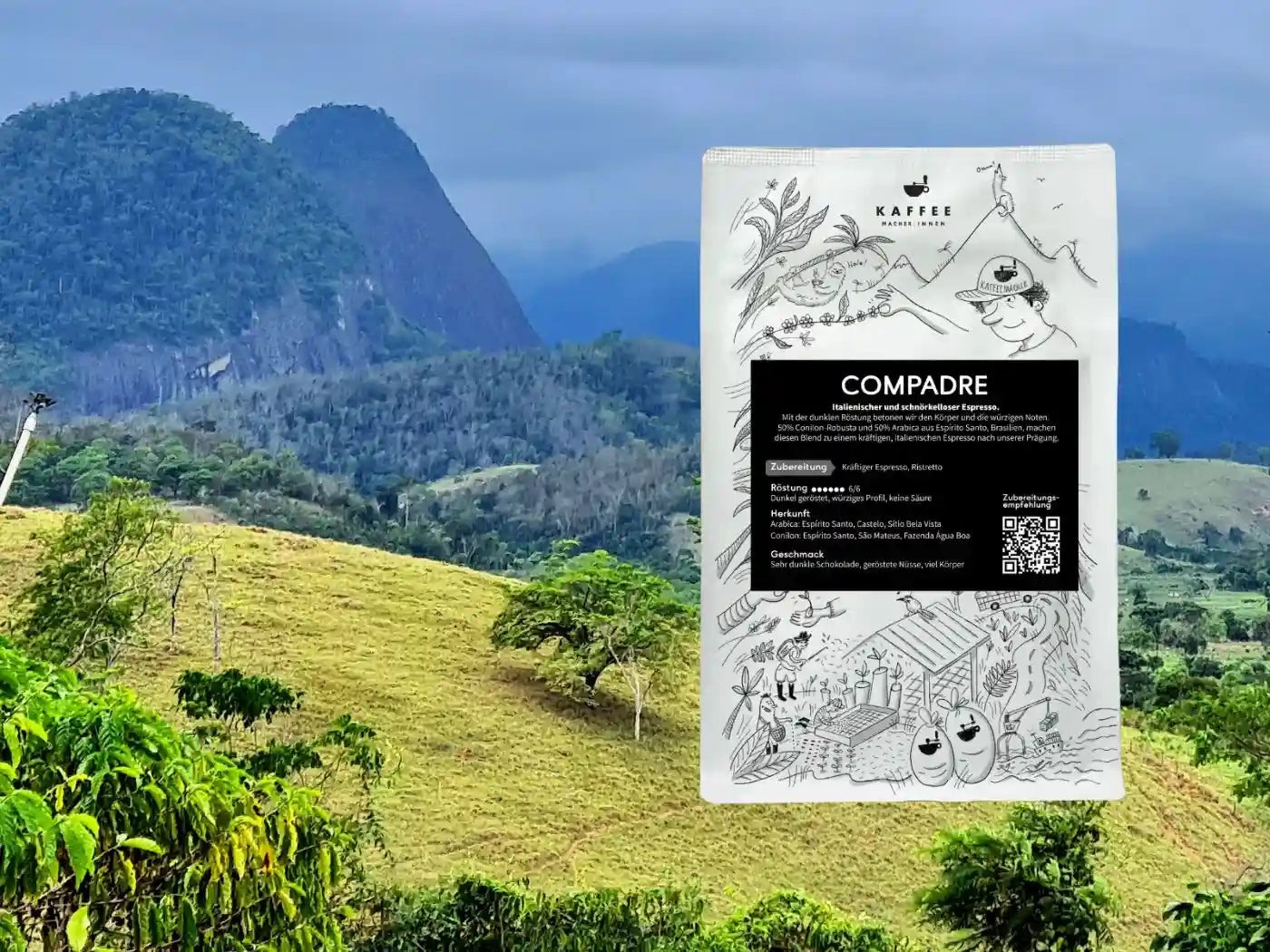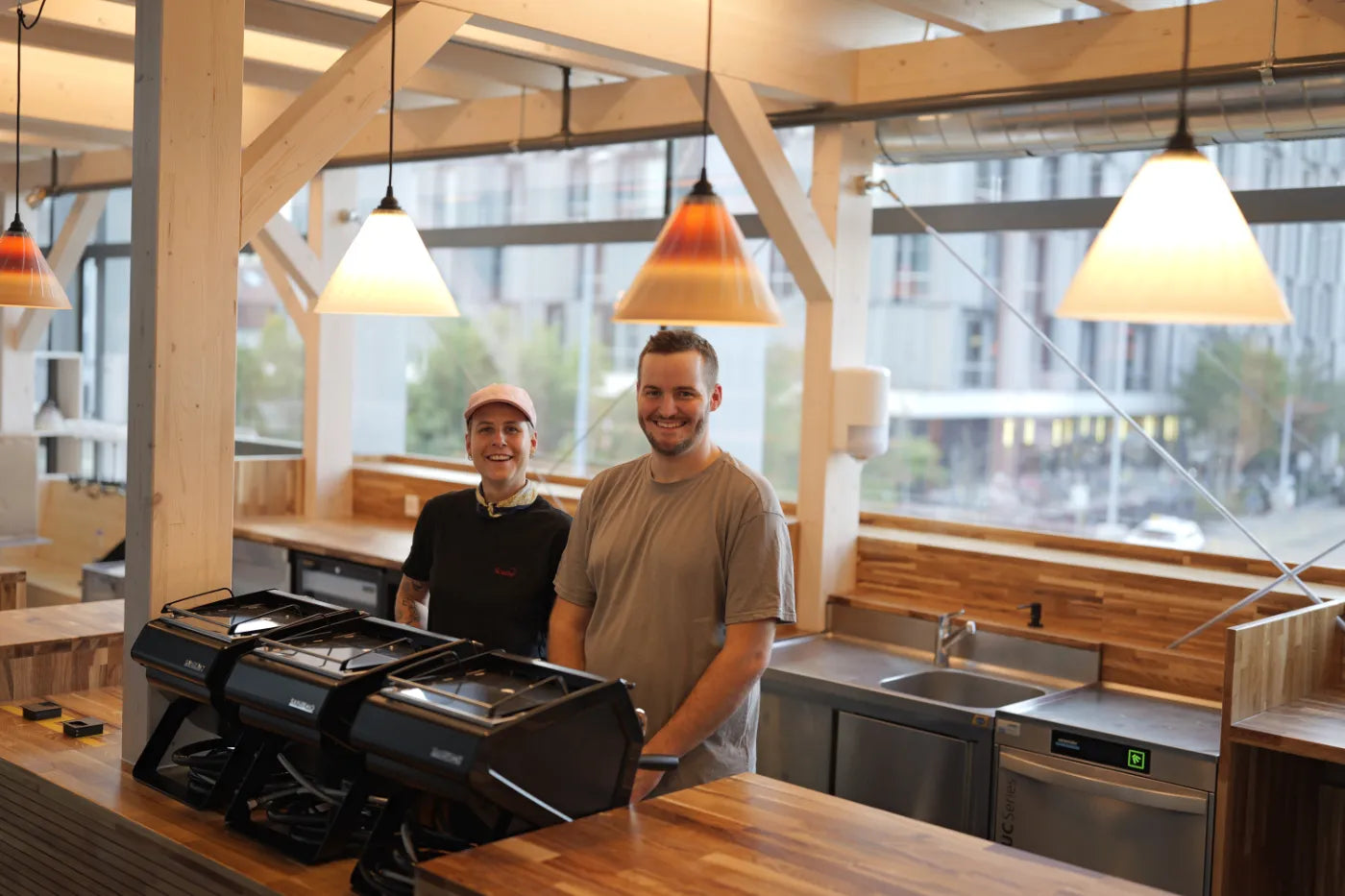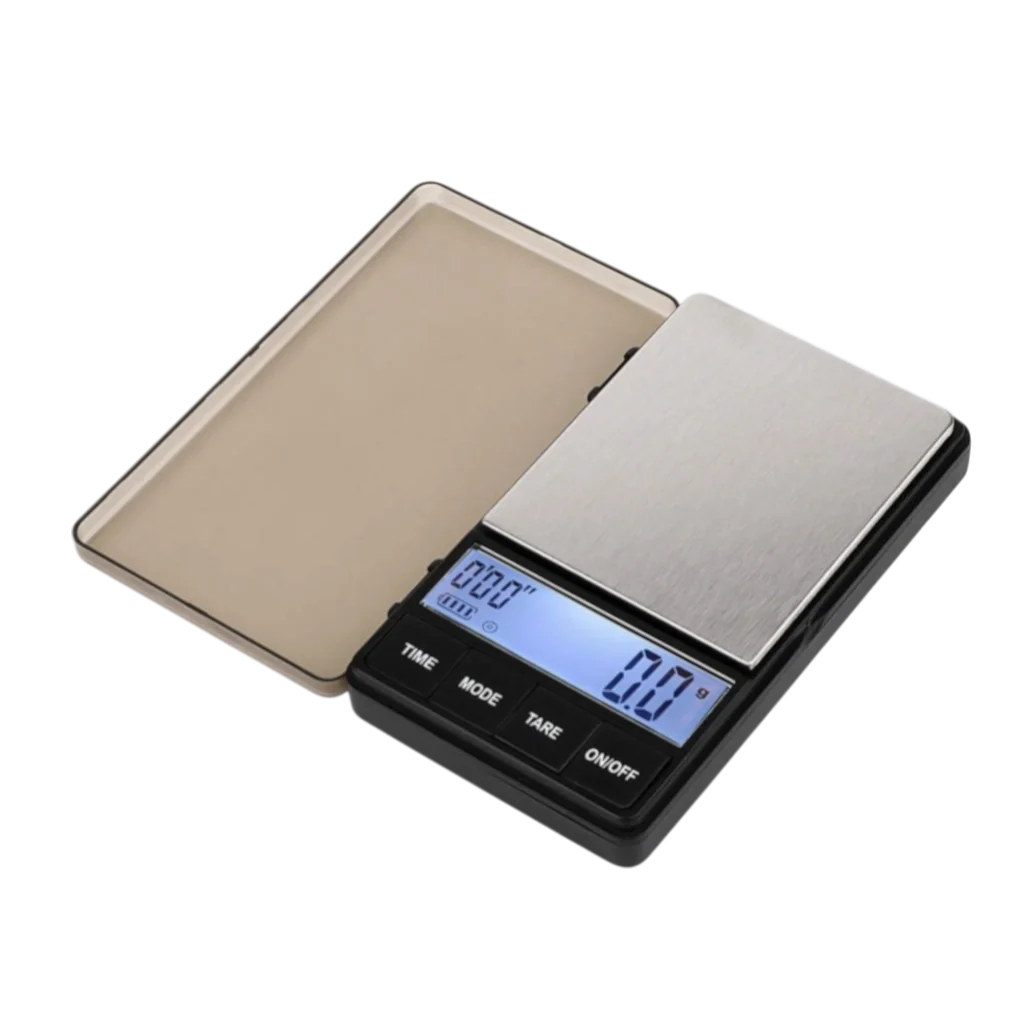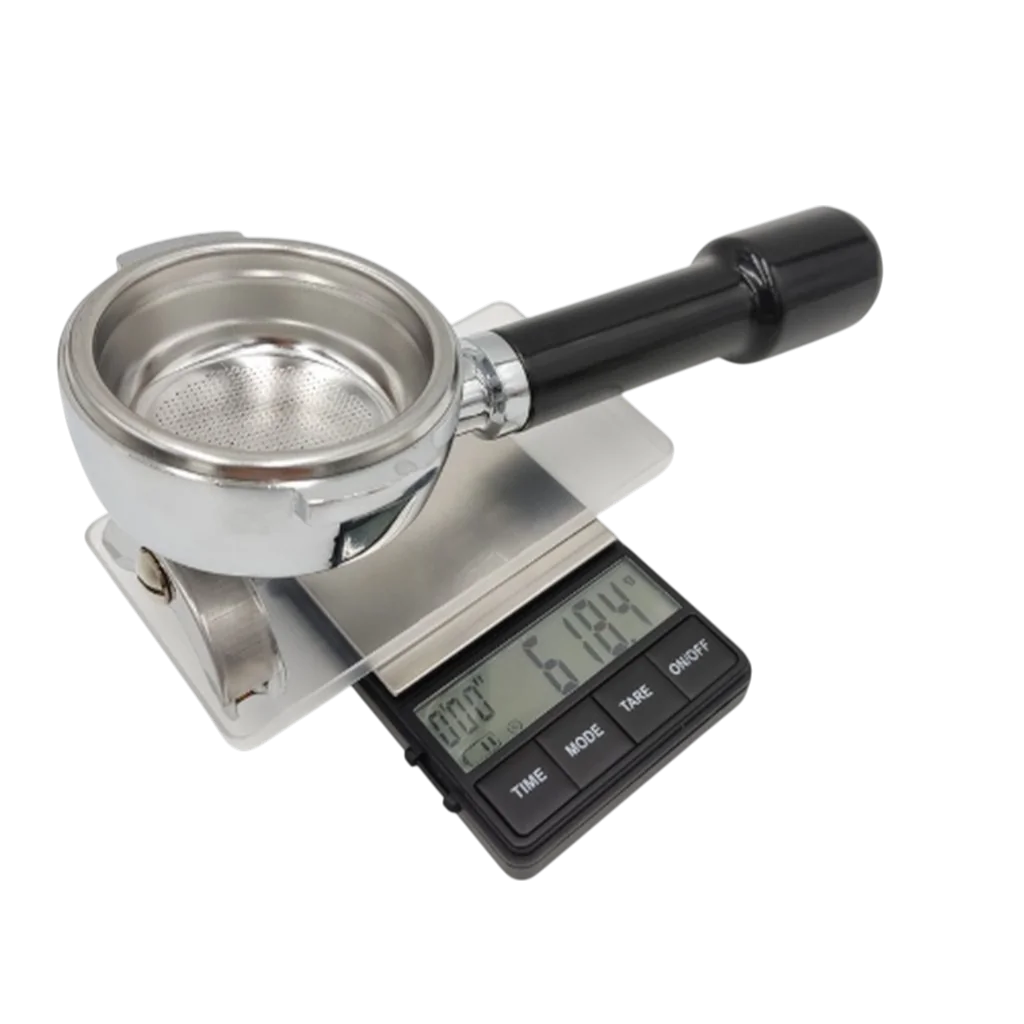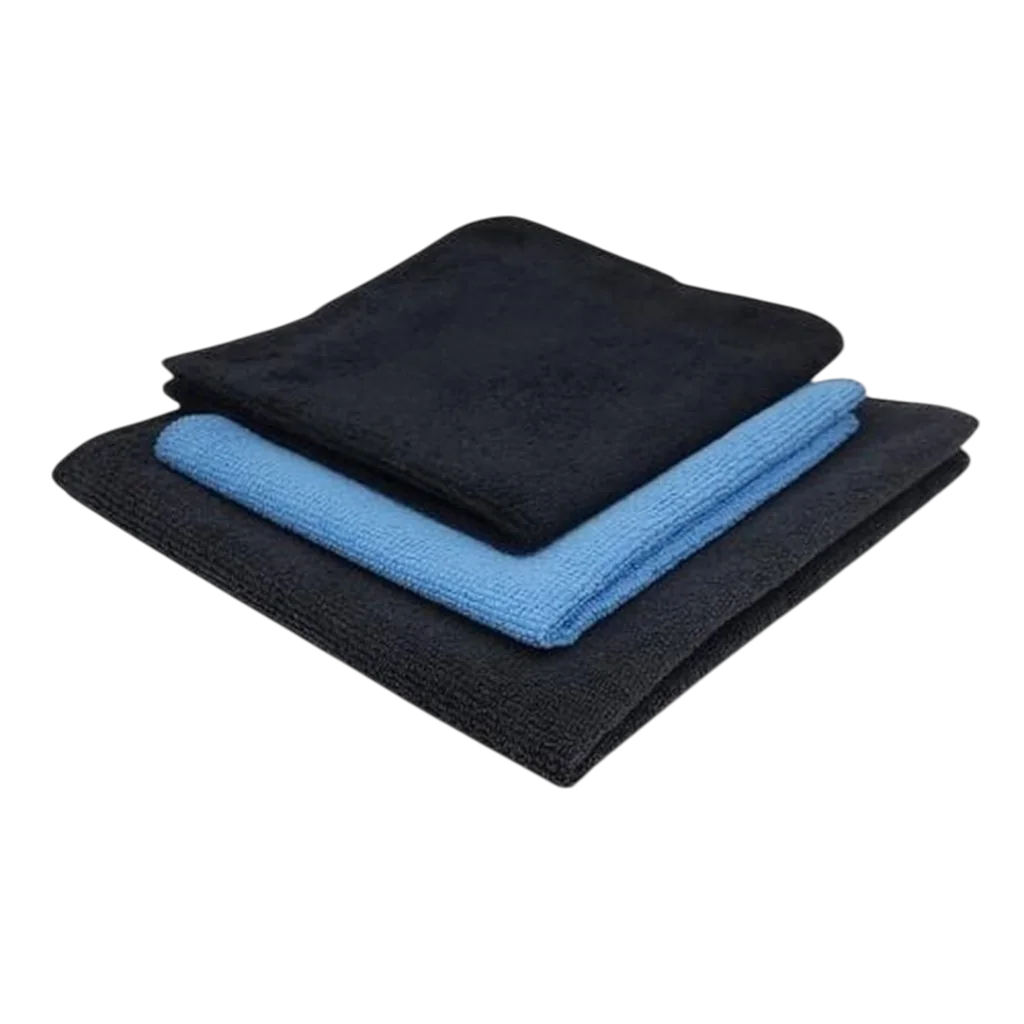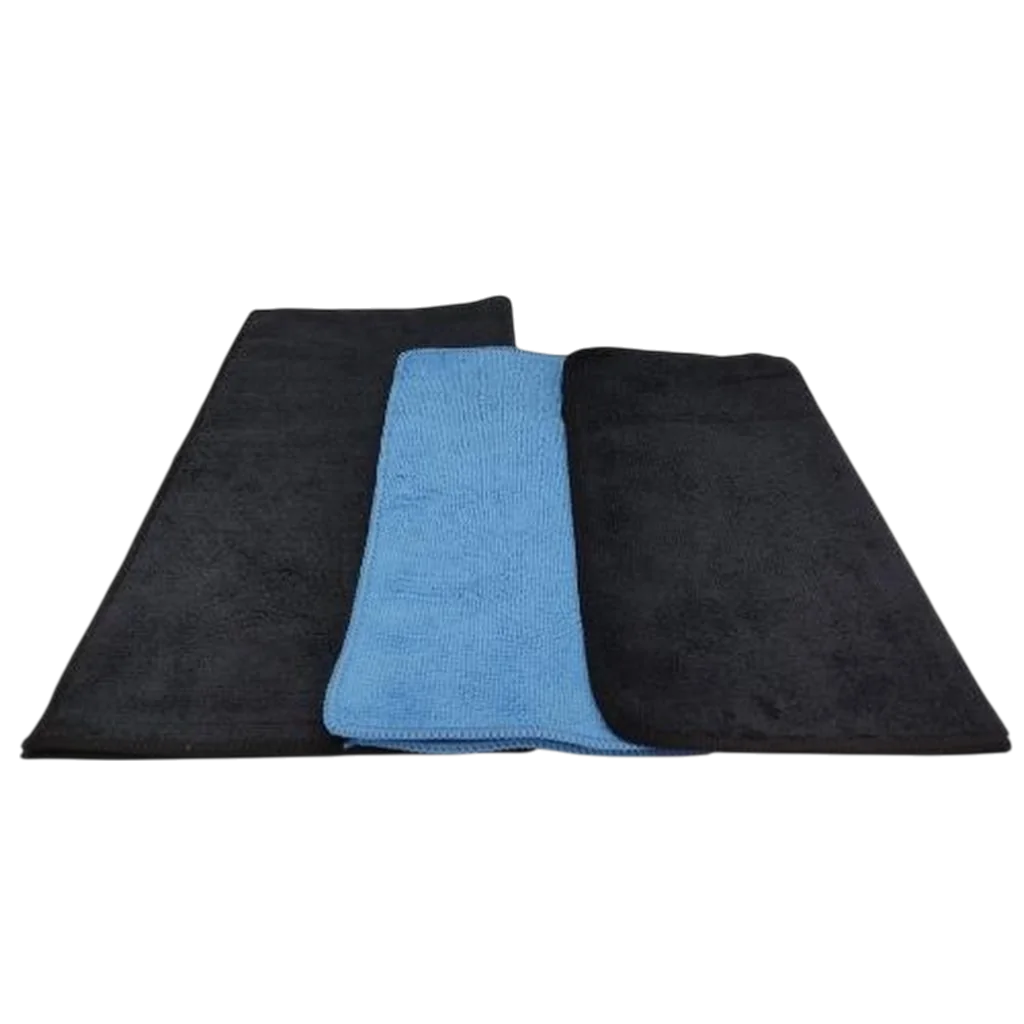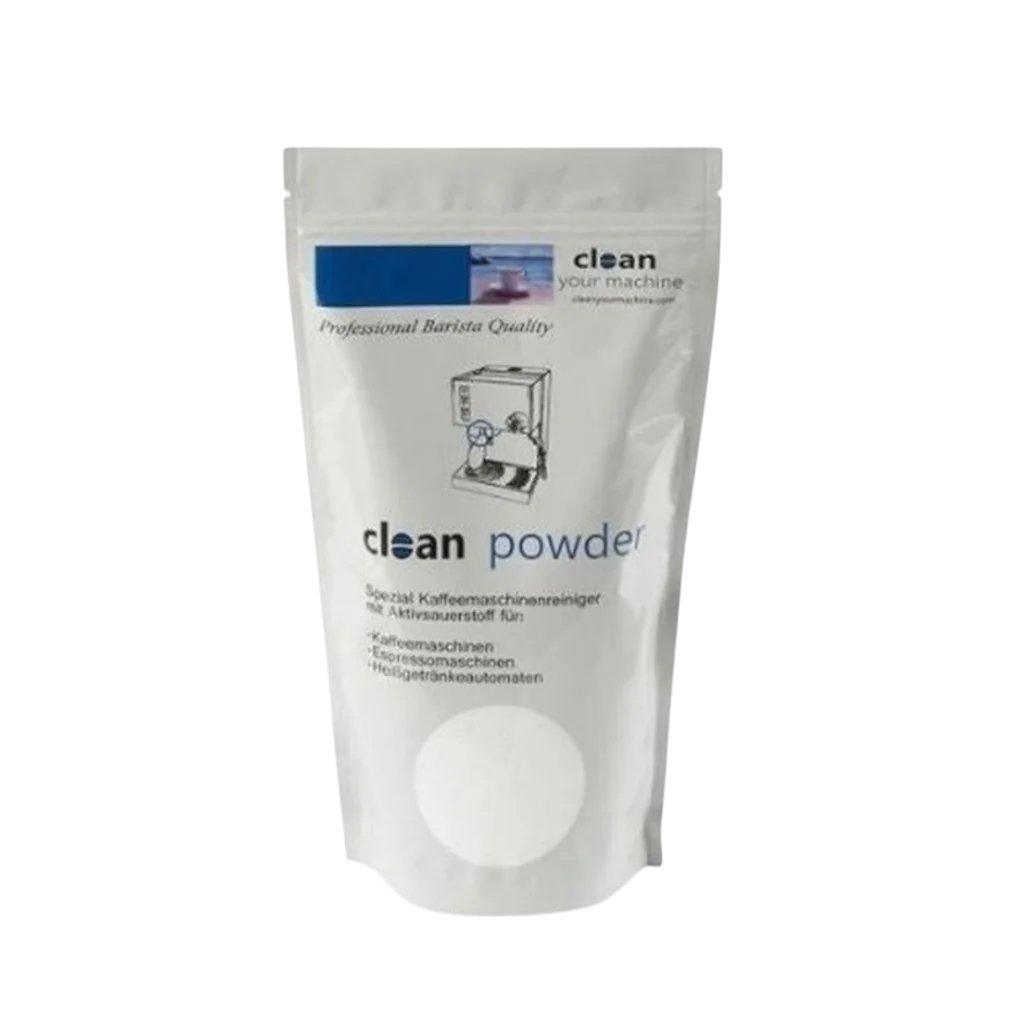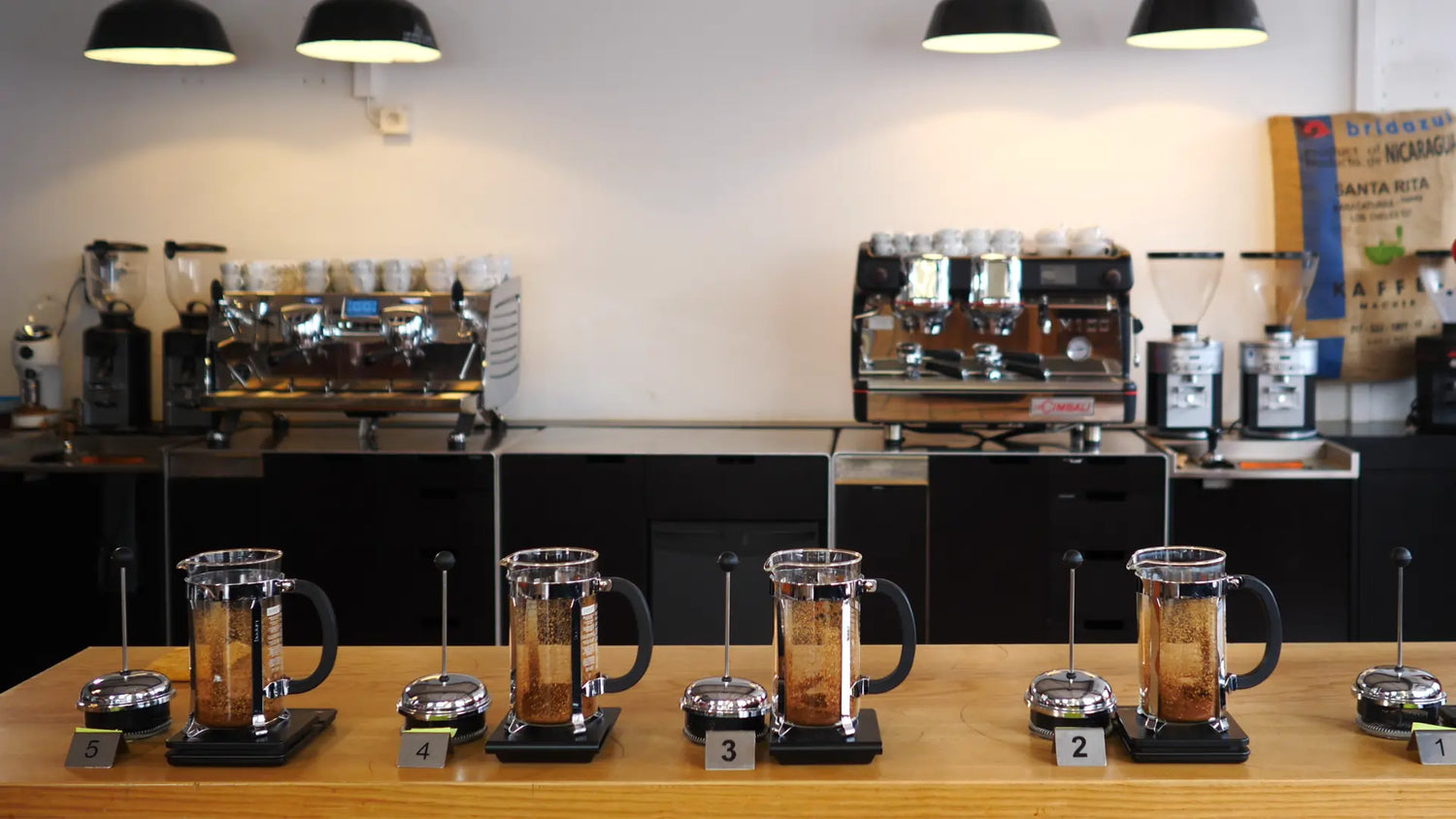The French press, or plunger coffee brewing method, delivers simply great coffee—and plenty of it—like no other coffee brewing method. In this article, Swiss filter coffee master and 2017 German Coffee Taster of the Year Benjamin Hohlmann summarizes his two favorite French press recipes. We answer the most important questions, explain how much ground coffee is needed for each amount of water, and how to find the right brewing temperature.
French press, plunger pot or coffee press
More important than the name of the coffee maker is its operating principle. First, coffee is poured into a round glass or metal container. Hot water is poured in at a ratio of 1:15 to 1:16. This corresponds to 60 to 70 grams of coffee to one liter of water, depending on your taste. The water has a brewing temperature of approximately 95 degrees Celsius. After a brewing time of 3 to 5 minutes, a central rod presses down on a sieve, mesh, or paper plunger. The plunger largely separates the coffee particles from the brewing water. The plunger thus completes the brewing process and gives the French press its name.
This French press is so simple and so practical. And this simple principle is one reason why the French press is so popular. Anyone can make great coffee at home with a French press. The following two recipes are simple and emphasize two different flavors. Benjamin has also summarized a short version of the French press recipes here.

French Press Recipe No. 1: classic, strong, good
The procedure described in the introduction is the classic French press recipe. Here it is again, step by step.
- Coffee quantity: 60 to 70 grams of coffee per liter. Depending on the size of the French press, use 30 grams of coffee and 500 ml of water, for example.
- Pour the coffee grounds into the French press. Boil the water or heat it to 96 degrees Celsius if the kettle has a temperature control. Once the water has boiled, wait about 2 minutes before pouring.
- Pour the entire amount of water into the French press and then stir once to ensure that all the coffee grounds come into contact with the water.
- Place the lid with the plunger on the lid without pressing down. Then wait four minutes.
- After four minutes, break the crust with a spoon. This makes it easier to push the plunger down. It's even easier if you scoop out the crust with two spoons. Gently press the plunger down.
- Then serve the coffee.
Since there's still water and coffee in the plunger pot, the coffee extraction process essentially continues. However, there's very little movement after the plunger is pressed down, which also severely limits the extraction process. For best results, I still recommend serving the coffee after the four-minute brewing time or pouring it into another pot.
French Press Recipe No. 2: elegant, nuanced, and championship-worthy
For even better results with the French press, a recipe based on professional coffee tasting is ideal. This preparation method is called cupping. Cupping, or cup tasting, is used in quality control by green coffee traders and roasters.
With this method, the coffee grounds are placed directly into a cup and poured over with hot water at approximately 94 degrees Celsius. After four minutes, the crust is broken and skimmed off. After another four minutes, the tasting begins with a spoon from the top. This avoids stirring up the coffee that has sunk to the bottom.
Sensorily, the coffee tastes “clearer” and “cleaner” than the sensory results of brewing with French press recipe 1. The mouthfeel is also “softer” and “more elegant.”
This taste result can also be achieved with a French press.
The procedure of steps 1 – 4 is carried out as in recipe 1.
- 5. Break up the coffee crust with a spoon and skim it off with another spoon. Instead of pressing down the plunger, wait for about four minutes. During this time, solid particles and coffee sediment will sink to the bottom.
- 6. After 4 minutes, pour the coffee directly into the tamper. Do not press the plunger down. Pour gently to prevent the coffee particles from rising to the surface. The sieve or metal mesh of the tamper also helps to retain particles.
- 7. The best tasting result is achieved when the coffee is not poured all the way to the bottom of the grounds. This prevents sediment from being resuspended.

The ratio of coffee quantity to water in the coffee press
Using 60 to 70 grams of coffee produces the best tasting coffee, which most Central European palates appreciate. The exact amount can be adjusted to suit your taste.
Generally, using more ground coffee, for example, 7 grams of coffee per 100 ml or 70 grams per liter, results in a "stronger" coffee. Using more ground coffee also provides more extraction potential for the water used. It's often overlooked that this also makes the coffee drink more "acidic."
While using more coffee makes the drink stronger, the same amount of water can no longer extract the substances from the coffee as effectively. This tends to result in under-extraction, which generally results in a more acidic taste.
If you want your coffee to be stronger without increasing the acidity, a finer grind often leads to better results. However, it's important to note that a finer grind results in a higher extraction rate of the coffee powder, which tends to be more bitter.
When the ratio of coffee powder to water settles at 60 to 70 grams of coffee, the brewing is usually balanced and delicious.

Which coffee goes well with a French press?
The French press, or French press, is one of the alternative brewing methods and belongs to the "immersion" family of brewers . Immersion means that the water and coffee are in contact with each other for most of the brewing process—the coffee is immersed in water. In contrast, percolator systems, such as traditional filter coffee, involve water flowing through the coffee.
The choice of coffee depends largely on the strength of the final beverage. This is roughly the same for both immersion and percolator systems. Strength is the concentration of dissolved coffee particles relative to water. The best tasting results are achieved when a French press coffee contains approximately 1.2 to 1.5% dissolved coffee particles. In technical terms, this is called "Total Dissolved Solids," or TDS for short.
To put that into perspective: the remaining 98.5 to 98.2% of the coffee beverage is water! This is a clear indication of the importance of the water used.
So which coffee goes well with a French press?
Filter coffees are best suited for French press brewing. The lighter roast allows for flavor nuances and the coffee's inherent positive acids, which balance very well with the amount of water (+98%).
We offer our filter coffees in Switzerland , Germany, and the EU .
Darker roasted coffee is used to prepare espresso. This is also due, among other things, to the water ratio. Since only 90–93% water provides balance in the final espresso drink, the darker roast reduces the intensity of the acidity.
Important: The acids mentioned here are especially important for the flavor of coffee. As with wine, they contribute to its balance. Acidity, sweetness, and bitterness are balanced in good coffee.

What kind of water should be used for the French press?
As with all coffee beverages, French press coffee tastes best when using "soft" water , which is itself free of any off-flavors. Soft indicates a lower hardness, meaning fewer minerals like magnesium or calcium in the water.
"Hard" water buffers the coffee's acidity, thus eliminating a key flavor factor. Without acidity, coffee becomes "dull," one-dimensional, and the flavors can't develop properly.
For brewing methods such as the French press or the classic filter, water with a total hardness of 2 to 5 German degrees Celsius and a corresponding carbonate hardness is best. A table filter from BWT or Britta can reduce the water hardness. Mineral waters such as Lauretana, Black Forest, or Volvic are also very soft.
Who is the French press suitable for?
The French press is the simplest brewing method for making simply great coffee. It's more forgiving than the drip filter, moka pot, or espresso. Even if the grind isn't quite right, the French press produces good results.
We always recommend freshly grinding the coffee. However, if the coffee isn't freshly ground and the grind size can't be adjusted, the French press produces the best results. It's a forgiving brewing method. This is primarily due to the fact that the coffee sits in the water. No, or even incorrect, movement affects the result. If the water doesn't drain when brewing filter coffee because the grind is too fine, the result will always be poor. Not so with a coffee press or French press.
The French press brews even larger quantities of coffee without any problems. The 1-liter version of the Bodum Chambord French press brewer, for example, is suitable for brewing up to 800 ml of coffee. The results don't deteriorate with larger quantities, but remain consistent. This makes the French press brewer ideal for brewing coffee for larger groups. Another advantage is that it requires little "supervision." And even if step 5 of both recipes isn't followed to the minute, the French press brewer is forgiving in terms of taste.

The Bestargot titanium coffee press * is one of the most interesting coffee brewing methods for outdoor use. This French press, weighing just 216 g, earned a top spot in our article on coffee brewing methods on the go .
How much coffee powder per cup for how many people?
An average coffee cup holds 150 ml. To make a full cup of coffee for four people each, at least 600 ml of coffee should be brewed.
But be careful! If you pour 600 ml of water into 36 grams of coffee, you won't get enough coffee (remember: use approximately 6-7 grams of coffee per 100 ml of water, see above).
For every gram of coffee used, 2–2.5 grams of water remain in the coffee grounds. In our example, that's at least 72 grams of water. So, from the 600 ml, we only get about 530 ml of coffee, or even slightly less if we consistently pour in less. This results in a better taste.
That's why it makes sense to always brew a little more than 150 ml per cup with a French press. This brewing method makes it easy to brew even larger volumes. We've published a separate article on the perfect amount of ground coffee per cup.

Freshly ground is half brewed!
Freshly ground coffee also tastes best when used in a coffee press. Grinding the coffee breaks down the coffee's natural protective coating. It then begins to react with the oxygen in the air and light. Volatile aromatic components evaporate, and the coffee's oils begin to oxidize. The coffee loses its complexity and simultaneously becomes rancid.
We tested 14 hand grinders under €100, and almost all of them are well-suited for brewing filter coffee and French press coffee. We've included higher-priced and excellent models from Comandante in our shop . We also now offer the latest version of one of the test-winning hand grinders from our test series, the Timemore C3 hand grinder .

Which grind size for the French press?
The grind is only slightly coarser than for filter coffee. Kruve has developed a good reference guide. While we don't agree with all the recommended grind sizes for the different methods, the grind reference is helpful.
A grain size of 700 – 1000 is perfect for preparing the recipes we show with the French press.
